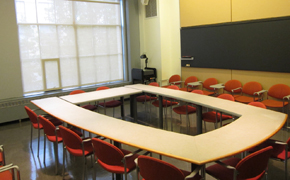This Course at MIT pages are part of the OCW Educator initiative, which seeks to enhance the value of OCW for educators.
Course Overview
This page focuses on the course 4.663 History of Urban Form: Locating Capitalism: Producing Early Modern Cities and Objects as it was taught by Lauren Jacobi in Spring 2014.
This seminar-format class explores major topics and themes concerning interconnections between early modern artistic and architectural creation and the economy. Core course themes include: commodification, production, and consumption, using case studies of the impact of the mercantile economy on chapels; palaces; prints and paintings, and their replication; and other material objects, including coins.
Course Outcomes
Course Goals for Students
- To address the manufacturing and object life-history of late medieval and Renaissance goods, especially art and architectural creations, with questions about the economy and its interpretation in mind
- To discuss theories and notions of credit and debt in relation to cultural production
- To engage in strong student-driven research projects
I believe there are myriad ways to evaluate how students are engaging with course material.
—Lauren Jacobi
Below, Lauren Jacobi shares insights about evaluating student learning in 4.663 History of Urban Form: Locating Capitalism: Producing Early Modern Cities and Objects.
I believe there are myriad ways to evaluate how students are engaging with course material. Two approaches I favor are 1) to let them present material in class, so that I can attempt to understand what resonates with them, where there may be comprehension issues, etc.; and 2) to carefully read written material that they submit, especially their response papers. Along that line, it can help to ask to see revisions, or have revisions built into the grading structure. It is also critical too, I feel, to generate dialogue in class that measures how students are responding to the way material is being conveyed.
Curriculum Information
Prerequisites
Permission of the instructor
Requirements Satisfied
May be applied toward a PhD in History and Theory of Architecture or Art, but is not required.
Offered
Every other spring semester
Assessment
The students' grades were based on the following activities:
 45% Three response papers
45% Three response papers 15% Final presentation
15% Final presentation 25% Final paper
25% Final paper 15% Class participation and attendance
15% Class participation and attendanceInstructor Insights on Assessment
Read Lauren Jacobi's thoughts on evaluating students.
Student Information

Breakdown by Year
Mostly doctoral candidates, with a few students seeking professional architecture or city planning degrees.
Breakdown by Major
Doctoral candidates are primarily from the History, Theory and Criticism Program in the Department of Architecture.
During an average week, students were expected to spend 12 hours on the course, roughly divided as follows:
In Class/Lecture
- Each class revolved around a discussion of interpretive studies led by rotating student groups comprised of two discussion leaders and three panelists.
- Panelists wrote critical synopses of the arguments of the assigned texts, while discussion leaders prepared questions for the panelists.
- Discussion leaders summarized the discussions at the end of class sessions.
- Each student delivered an oral presentation on the subject’s questions and themes during the final class meetings.
Out of Class
- Students read assigned texts, wrote response papers, and prepared for seminar discussions.
- Students prepared final oral presentations and papers.
Semester Breakdown
| WEEK | M | T | W | Th | F |
|---|---|---|---|---|---|
| 1 |  |  |  |  |  |
| 2 |  |  |  |  |  |
| 3 |  |  |  |  |  |
| 4 |  |  |  |  |  |
| 5 |  |  |  |  |  |
| 6 |  |  |  |  |  |
| 7 |  |  |  |  |  |
| 8 |  |  |  |  |  |
| 9 |  |  |  |  |  |
| 10 |  |  |  |  |  |
| 11 |  |  |  |  |  |
| 12 |  |  |  |  |  |
| 13 |  |  |  |  |  |
| 14 |  |  |  |  |  |
| 15 |  |  |  |  |  |
| 16 |  |  |  |  |  |
 No classes throughout MIT
No classes throughout MIT Seminar
Seminar Student presentations
Student presentations Final paper due
Final paper due

 Room 1 of 1
Room 1 of 1 
 No class session scheduled
No class session scheduled Office hours
Office hours